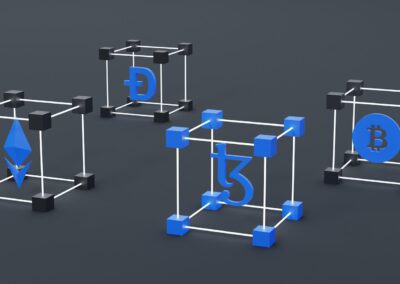Safeguarding Digital Content with Advanced DRM Systems
Introduction to DRM Systems and Content Protection
Hardware-based encryption techniques have undergone significant advancements in recent years, driven by the growing sophistication of cyber threats and the increasing demand for content security. Traditional software-based encryption methods, while effective to some extent, are susceptible to attacks and vulnerabilities. In contrast, hardware-based encryption offers a higher level of protection by offloading cryptographic operations to dedicated security chips, which are designed to withstand physical and logical attacks.
In the ever-evolving landscape of digital content distribution, ensuring the security and integrity of digital rights has become paramount. DRM systems (Digital Rights Management) play a crucial role in this endeavor by employing sophisticated encryption techniques to safeguard content from unauthorized access and distribution. Among these techniques, hardware-based encryption stands out as a robust and reliable method for protecting digital assets. By leveraging dedicated security chips, DRM systems can fortify content against tampering and piracy, thereby preserving the rights of content creators and distributors.
The Evolution of Hardware-Based Encryption
These dedicated security chips serve as secure enclaves, isolating sensitive operations and cryptographic keys from the rest of the system. This hardware-based approach ensures that even if the underlying software is compromised, the integrity of the encryption process remains intact. Moreover, hardware-based encryption accelerates cryptographic operations, enhancing the performance and efficiency of DRM systems, particularly in high-throughput environments such as streaming platforms and digital distribution networks.
Preventing Tampering and Piracy Through Dedicated Security Chips
One of the primary objectives of hardware-based encryption techniques is to prevent tampering and piracy of digital content. Dedicated security chips act as trusted anchors, verifying the authenticity of content and ensuring that it has not been altered or manipulated. These chips implement secure boot mechanisms, cryptographic signatures, and secure storage solutions to establish a chain of trust from the hardware level upwards.
By integrating dedicated security chips into DRM systems, content owners can enforce access control policies, enforce digital rights, and trace the distribution of content across various platforms and devices. Furthermore, the use of hardware-based encryption instills confidence among content creators and distributors, encouraging them to invest in digital content creation and distribution without fear of intellectual property theft or unauthorized reproduction.
The Role of Artificial Intelligence in Advancing Content Security
Artificial Intelligence (AI) is playing an increasingly prominent role in enhancing content security within DRM systems. By leveraging machine learning algorithms, AI can analyze vast amounts of data to identify patterns and anomalies indicative of potential security breaches. For example, AI-powered anomaly detection algorithms can detect unusual access patterns or unauthorized attempts to circumvent encryption protocols, enabling DRM systems to respond proactively to emerging threats.
Moreover, AI algorithms can continuously adapt and evolve based on new data and emerging trends, making them highly effective in combating evolving cyber threats. For instance, AI-driven behavioral analytics can profile user behavior and detect suspicious activities in real-time, such as unauthorized attempts to access encrypted content or tamper with digital rights management mechanisms. By integrating AI into DRM systems, content owners can stay ahead of cybercriminals and protect their intellectual property effectively.
Empowering Modern Technologies to Combat Digital Piracy
In the age of digital piracy, modern technologies are essential for combating illicit distribution and unauthorized access to digital content. Blockchain, in particular, has emerged as a powerful tool for enforcing digital rights and preventing piracy. By leveraging blockchain technology, DRM systems can create immutable records of content ownership, distribution rights, and transaction history, ensuring transparency and accountability throughout the content lifecycle.
Blockchain-based DRM solutions enable content owners to track the distribution of their content across multiple platforms and devices, facilitating the enforcement of licensing agreements and royalties. Additionally, blockchain smart contracts can automate payment processes and revenue sharing agreements, providing content creators with fair compensation for their work. By embracing modern technologies like blockchain, Saudi Arabia and the UAE can strengthen their digital ecosystems and foster a culture of innovation and creativity.
Conclusion: Strengthening Content Security in the Digital Age
In conclusion, the adoption of hardware-based encryption techniques represents a significant advancement in the field of digital rights management. By leveraging dedicated security chips, DRM systems can provide robust protection against tampering, piracy, and unauthorized access to digital content. This not only safeguards the rights of content creators and distributors but also fosters a thriving digital ecosystem where innovation and creativity can flourish.
As technology continues to evolve, the role of hardware-based encryption in content security will become increasingly critical. Business executives, mid-level managers, and entrepreneurs in Saudi Arabia and the UAE must recognize the importance of investing in advanced DRM systems that incorporate hardware-based encryption techniques. By prioritizing content security, they can ensure the long-term viability and success of their digital ventures in an increasingly interconnected and digitized world.
—
#HardwareEncryption #DRMSystems #ContentProtection #DigitalRights #Cybersecurity #DigitalContent #SaudiArabiaTech #UAETechnology #LeadershipSkills #ProjectManagement























